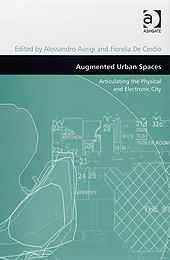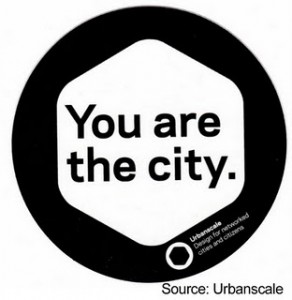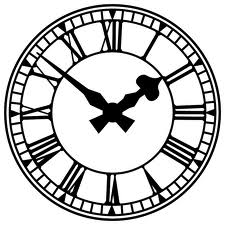I've focused my attention on what adults can do with the real world when data is associated with people, places and objects in particular settings. When developing AR-4-Cities (with the AR-4-Basel project) and AR-4-Venues (with the AR @ Mobile World Congress 2012 project) the scenarios always involve an adult roughly the age of my daughters (21, 24 and 26).
Side note: These people are among the very oldest digital natives. In early 1987 the eldest "painted" pictures (in black and white) with a mouse on a Fat Mac. A few years later, the middle daughter's first machine, a Macintosh II, was connected to a 2400 baud modem but I'm really not sure she ever used it because there wasn't any content on the Web and it was horribly difficult to get connected. By that time I had graduated to the 9600 baud modem to connect to AppleLink and download e-mail. 
Okay, back to the future. Within months of the beginning of the mobile AR craze CNET senior writer, Daniel Terdiman, revealed the future of toys. With the exception of one trip to a Toys-R-Us to purchase an iTag AR-enabled Avatar Action Figures set, in February 2010 (and this was for an adult friend who could not obtain the Mattel merchandise in Switzerland), I have neglected the youth segment.
What an oversight! How many children have smartphones or tablets? The most accurate answer is more today than last year and fewer today than next year.
Plenty of people within the AR community recognized this trend early and have been working on it. Put-a-Spell, the first game Ogmento (an AR game publisher started by Ori Inbar) demonstrated about two years ago, featured a panda bear teaching children how to read with tiles (photo below).
And the category is expanding. The results of the survey of AR toys Christy Matte published on Techlicious today reveals the 2012 "crop" of AR for kids. I've never been to Techlicious before this article caught my eye. The topic is a good fit. Although I detest their slogan "We make Technology Simple," the site appears to be a technology portal for (young) women, probably the age of my daughters only not digital natives, where they can read reviews and make purchases. Recent blogs and feature stores are about Internet safety and the best tablets for children's books.
I don't know when I'll have an opportunity to use the new AR-enhanced toys, if ever, but it's clear that children who play with these in 2012 will find AR in other aspects of their lives perfectly normal. And, in 5 years time, the users of these products will marvel if they arrive in a new place and discover that there are no local points of interest available. It will be like a Christmas tree without gifts under it or going into the Sahara dessert without water.









